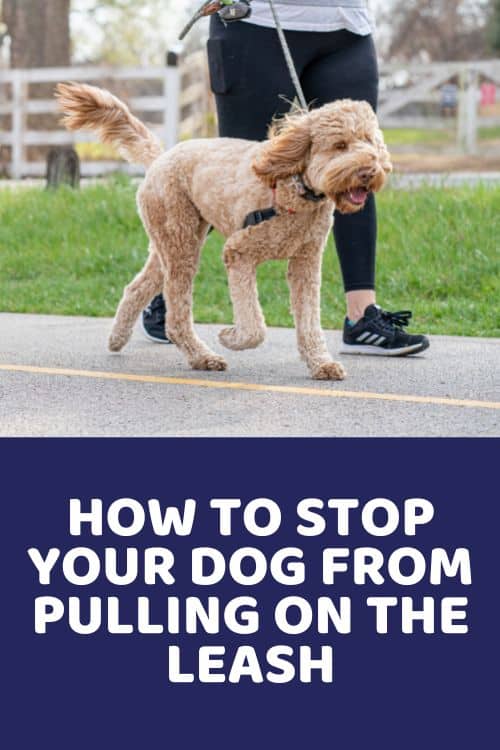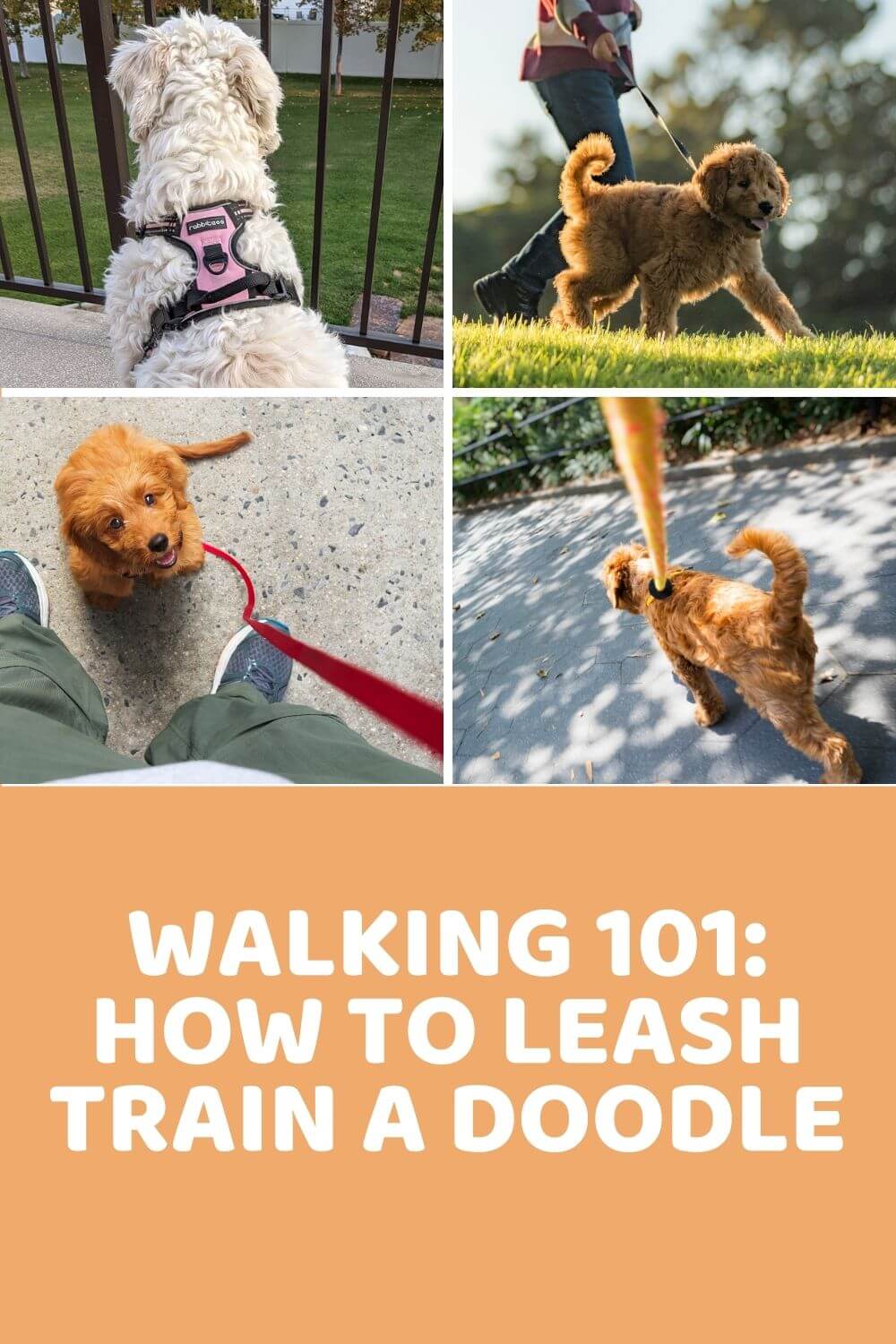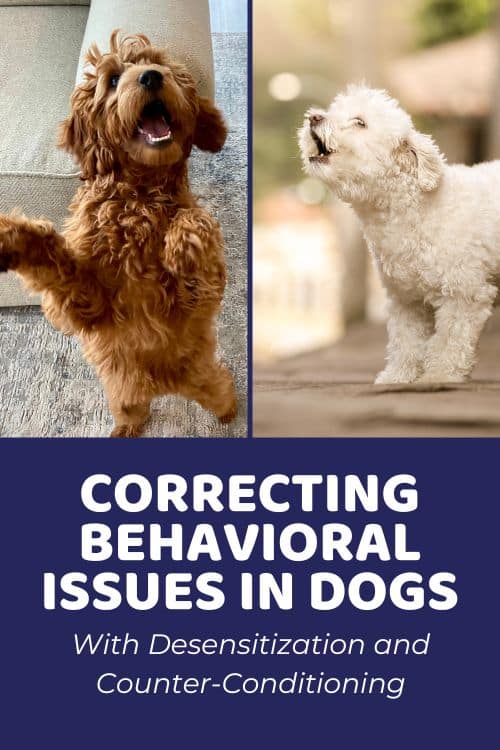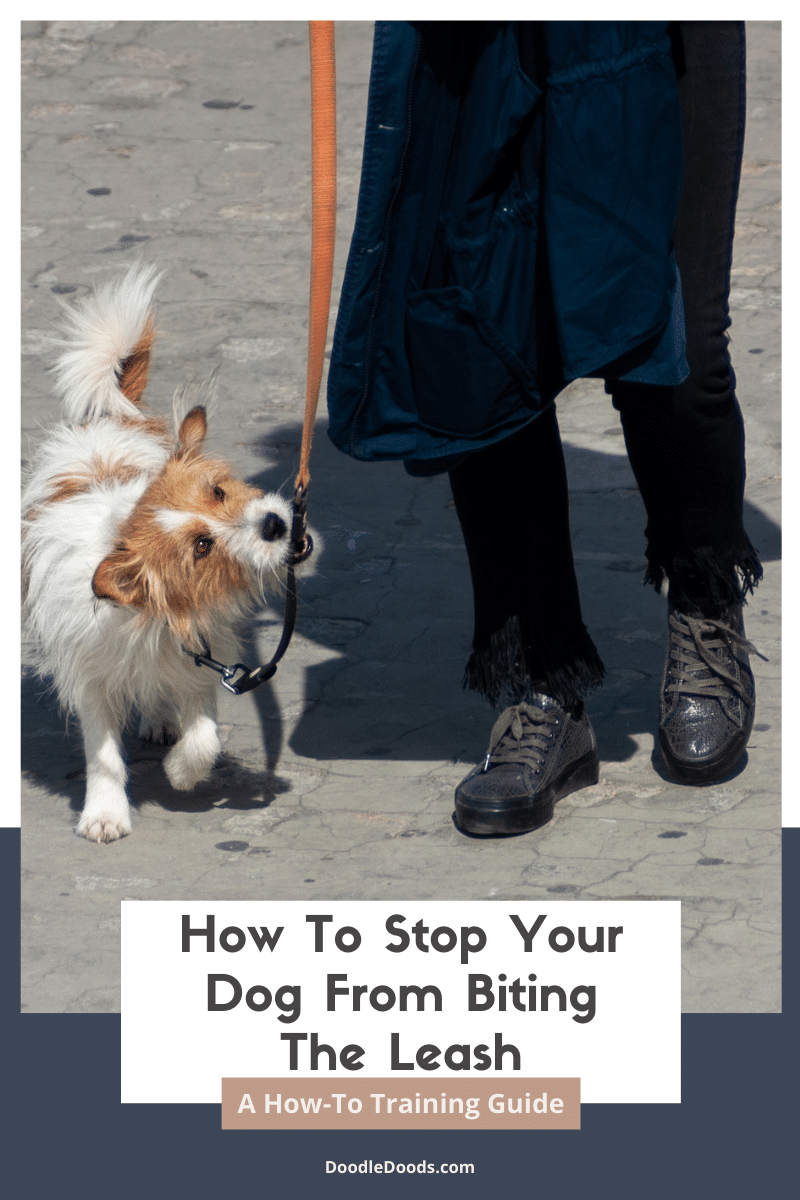We all know that dogs can be incredibly strong, excitable creatures. And when they pull on the leash, it can be difficult to stop them. In this article, we’ll discuss various methods for how to stop a dog from pulling on the leash. We will also discuss the most common reasons why dogs love to pull on the leash and why it should be dealt with. If you’re ready to take your leash walking skills to another level, then keep on reading.
Table of Contents
- Introduction
- Why Does My Dog Always Pull On The Leash?
- How To Stop A Dog From Pulling On Their Leash
- Which Equipment Can Help Me In Walking A Dog That Pulls?
- How To Stop My Dog From Lunging And Barking While Walking
- How To Stop Dog From Pulling On Leash: Frequently Asked Questions
- How To Stop Dog From Pulling On Leash: Final Thoughts
Introduction
Every dog owner knows that one of the most frustrating experiences can be taking your pup for a walk and having them pull on the leash. Whether you’re just out for a leisurely stroll or trying to get somewhere specific, it’s important to learn how to stop your dog from pulling on the leash.
Needless to say, walking your dog on a leash is incredibly beneficial for both yourself and your pup. Not only does it provide a safe and secure environment for your pup to explore, but it also allows you the opportunity to bond with them and become better acquainted with their behavior.
Additionally, walking on a leash prevents your pup from running away or wandering off, which can be incredibly dangerous if they get lost. Furthermore, keeping your pup on a leash ensures that they are respectful of other animals and people in public areas as well. All in all, there’s no doubt that consistently walking your pup on a leash has many benefits!
Leash walking can be one of the most rewarding activities you experience with your pup – but only if it’s done correctly. By understanding why dogs pull on the leash and following some of the tips on how to stop a dog from pulling on leash, you can ensure that your walks are enjoyable and stress-free.
Before we discuss how to stop a dog from pulling on a leash, we must understand why they do it in the first place. Once you understand why your pup pulls and have accepted it as part of their nature, you can start to implement techniques to stop leash pulling.
Unsurprisingly, leash pulling seems to be a common concern amongst the Doodle community according to our newsletter poll results:

Why Does My Dog Always Pull On The Leash?
The first step in getting your pup to stop leash pulling is understanding why they do it. Generally, dogs pull because they are eager to go explore their surroundings – especially if there are interesting smells, sights, or sounds! Learning how to reign in this natural instinct is key to a successful walk.
Another common reason why dogs pull is because they are excited to go for a walk. This can be exacerbated when you use the same route day after day – your pup knows the routine and gets more and more excited as the walk progresses. On the other hand, if the walk is too boring, your pup may start to pull on the leash as well. Who knows what’s going on in those minds!
Also keep in mind that pulling on the leash is oftentimes self-rewarding. Dogs know that pulling harder makes the adventure go faster and takes them where they want to go with less effort. They get what they want, and that’s that – this behavior is immediately reinforced, and so they continue to do pull on the leash at every opportunity.
Additionally, some dogs may be more inclined to leash pulling because they’re agitated. For instance, they encounter something or someone that triggers them, which could lead to excessive leash pulling along with barking and growling. The same applies to virtually anything that your dog hasn’t been desensitized to – if they’re afraid, stressed, or agitated, they may start to pull on the leash.
Did you know that the most common and well-known retractable leashes are often to blame for leash pulling? That’s because dogs can only move further whilst leashed if they’re pulling. Naturally, this will teach them that the pulling will help them explore further.
But above all, improper leash training is what causes the issue in the first place. That’s why it’s crucial to start with proper leash manners and training as early as possible. In fact, the longer you let your pup pull on the leash, the harder it will be to teach them the appropriate way to walk on a leash.
How To Stop A Dog From Pulling On Their Leash
Use A Loose Leash Or Chest-Led Harness
One of the best tips on how to stop a dog from pulling on the leash is to use a loose leash. As we mentioned, retractable leashes can often have the opposite effect, as they teach a dog that pulling is an appropriate way to explore and walk further. Although it may be a comfortable option for those people who walk much slower than their dog, it can teach the pup not-so-good walking manners.
It can definitely help to make sure that you are using the correct type of gear when walking your pup. If your dog is pulling on a regular collar, try switching to a harness instead. Harnesses have been shown to reduce leash-pulling in some cases because they offer better support and control while still allowing the dog freedom of movement.
Another option is to introduce a head halter, a.k.a a head collar. A head halter is a great tool for controlling your pup’s movements while walking – when they pull, you can control their direction with the halter. Keep in mind, however, that head halters have to be slowly introduced and not all pups are okay with using one.
Create A Walking Routine And Stick To It
Creating a walking routine can be helpful in reducing leash pulling. If your pup knows what to expect on each walk, they’ll be less inclined to pull because there won’t be any unknowns. A simple routine of the same route at the same time every day will help build good habits and keep your pup from getting too excited and pulled along by their curiosity. On the other hand, if there are plenty of fun and exciting things along the way, this could make the leash pulling issue worse.
Pick Non-Crowded Areas For Walking Your Dog
If your pup is prone to leash-pulling, it’s best to avoid crowded areas. Having too many distractions can lead to increased pulling and jumping as they try to get closer to the other people or dogs in the area. By picking a more secluded spot for your walk, you can reduce the amount of stimuli that your pup encounters while still giving them the opportunity to explore their surroundings.
Of course, there should still be plenty of interesting stuff to explore along the way, such as some nice grass to sniff. There should be a balance of exploration and not getting your dog overly excited.
Don’t Forget Exercise & Mental Enrichment
Oftentimes, the best tip on how to stop a dog from pulling on leash is to make sure they’re tired out. Dogs that are well-exercised and mentally stimulated tend to have less energy for leash pulling.
For this reason, you should make sure that your dog gets plenty of exercise each day, according to their unique needs. As all breeds are different, and even dogs of different ages have different exercise requirements, it’s important you provide your dog with what they need to live a healthy and happy life.
You also shouldn’t neglect mental enrichment methods and activities for dogs. Mental stimulation is just as necessary for these intelligent little creatures, especially if you’ve got a highly intelligent breed like a Poodle, Border Collie, or hybrid cross like a Doodle.
Redirect Your Dog’s Attention
Another effective way to stop leash pulling is by redirecting your pup’s attention away from the object they are interested in. Use commands like “sit” or “stay” and tug gently on their collar a few times until they look at you and obey your command instead of what they were focused on originally. Then give them a treat as a reward for responding correctly.
Change Direction Whenever Your Dog Starts Pulling The Leash
A simple, yet effective trick to stop leash pulling is to change direction. When your pup begins to pull, change direction. This will throw them off and help to distract them from pulling on the leash.
You could also try changing up your walking routes. If you’re taking the same route every day, your pup may get more and more excited as the walk progresses. Try switching up your routes or taking different paths, as this will help keep them guessing and less likely to pull on the leash.
Take Small Stops While Walking A Dog That Pulls On The Leash
As we mentioned earlier, it’s important that the walking route should be interesting, but not filled with distractions at every corner. So, there should be a balance of interesting spots to sniff and explore combined with a decent walking path. After all, it’s in your pup’s natural instincts to inspect whatever they come across.
That being said, a helpful trick for walking a dog that pulls is to take small stops whenever your pup starts pulling. If your dog starts to pull on the leash, don’t keep going – stop and make them sit down for a few seconds until they calm down. They will quickly learn that if they try to pull, the walk will come to an abrupt halt.
Prevent With Positive Reinforcement & Leash Pulling Training
How to stop a puppy pulling on a leash? Simple – it starts with prevention and early leash training. Leash training a pup that pulls can be a difficult process. However, the key is to take your time and use positive reinforcement and rewards to reward good behavior and correct bad behavior.
There are a number of methods that you could use to train your pup to walk on the leash without pulling or jumping. Some popular training methods include positive reinforcement and reward systems, as well as clicker training.
The most important technique is rewarding good behavior. When your dog isn’t pulling, reward them with verbal encouragement and treats. This will reinforce the idea that calmness on the walk is a desirable trait.
If you’re trying to figure out how to stop leash pulling in a slightly older dog, the process is rather similar – you should focus on positive reinforcement leash pulling training. Leash pulling can be trained away, but you have to put in the work.
Positive reinforcement may seem counterintuitive for some people, as it goes against the instinct to scold your pup when they misbehave. However, positive reinforcement is one of the most effective ways to achieve long-term behavioral changes. With that being said, you should never scold or punish your dog for pulling on the leash. Not only will this damage your bond, it could also have a negative affect on your dog’s learning speed and overall emotional wellbeing.
Get Some Help
There’s no shame in having to ask for help and that’s why we so love the Online Puppy School by Baxter & Bella. In addition to countless other resources on raising a dog, they also have extensive instructions on how to stop a dog from pulling on a leash. What’s more, all of the materials are available to you to explore at your own pace from the comfort of your own home.
Need help with training?

Use our discount code: DOODLEDOODS at checkout for an instant 25% off of BAXTER & BELLA, The Online Puppy School – an incredible value on their lifetime membership!
Learn More About BAXTER & BELLABe Patient & Consistent
Key consideration when walking a dog that pulls is that you have to stay consistent…with everything!
First of all, when teaching your pup how to walk on a leash, it’s important to use consistent commands. Stick to one command and phrase that you use each time they pull, so they understand what’s expected of them.
Secondly, don’t forget to reward your pup for behaving well. Even if your dog is pretty good at walking on a loose leash, it would be helpful to still practice once in a while to reinforce good manners. Don’t forget to pack plenty of treats before heading out!
Finally, the most important tip on how to stop a dog from pulling on leash is patience. It will take time for your pup to learn new behaviors, so it’s important to be patient and consistent in your approach, especially if your pup isn’t a *pup* anymore. Praise your dog when they do something good and reward them with treats – this will reinforce positive behavior and make the process easier!
Which Equipment Can Help Me In Walking A Dog That Pulls?
If you’re trying to figure out how to stop your dog from pulling on the leash, then you’ll need good equipment to work with. You can utilize various collars, leashes, and harnesses. Of course, this depends on your dog’s unique needs, such as their size, or how much they tend to pull. You’ll want something that’s good quality and durable, but also comfortable for your pup to wear, and comfortable for you to use. Don’t forget to use a high quality, comfortable leash that is easy to grip and long enough for you and your pup.
For instance, harnesses are designed to redirect the pressure away from your dog’s neck compared to collars, which can be helpful for teaching them how to walk properly on a leash. There are also head harnesses that could be very helpful when walking a dog that pulls, especially if they’re not as young anymore. If you opt for a head collar, make sure it’s fitted correctly so that it won’t cause any discomfort or irritation.
How To Stop My Dog From Lunging And Barking While Walking
When your pup starts to lunge or bark while on a walk, it can be extremely stressful and uncomfortable. Not just for you, but for them too! Leash reactivity and leash aggression stems from either fear, anxiety, or stress. Fortunately, there are some steps you can take to help prevent this behavior and make walking with your pup more enjoyable.
First, make sure that you keep your pup’s focus on you by making them look at you throughout the walk and offering rewards for good behavior. Also, try not to let your pup off-leash in public areas as this will only encourage them to bark at other animals or people. You should also avoid any other triggers you know of.
If they do become overly excited when approaching another person or animal, redirect their attention back to you using positive reinforcement such as treats or verbal praise. If they start barking again, calmly but firmly tell them “no” and remove them from the situation.
Additionally, it’s important to remain calm when facing a barking or lunging pup. Showing signs of anger or frustration can only further agitate your pup and make things worse. Lastly, consider using equipment such as harnesses, head halters, or muzzles. When used properly, these tools can be helpful in teaching your pup how to behave appropriately while out and about.
However, if it is a more serious issue, we do recommend you consult with your veterinarian and a professional dog trainer to get the most appropriate solution for your dog.
How To Stop Dog From Pulling On Leash: Frequently Asked Questions
Leash pulling can be an incredibly frustrating experience for both you and your pup. The key is to understand why they do it in the first place and then implement techniques that will stop leash pulling. The best way to stop a dog from pulling on the leash is by using positive reinforcement and rewards, creating a walking routine, and using the right equipment. Additionally, it’s important to be patient and consistent with your pup during the entire process! With patience, consistency, and these tips in mind you should be able to substantially reduce leash pulling.
Not necessarily. In fact, many people find that harnesses are actually excellent for teaching a dog proper walking manners. That’s because harnesses provide you more control over the dog and distribute the weight throughout the upper body. Nonetheless, it’s important to ensure that whatever type of harness you choose is fitted correctly on your pup.
Although pulling on the leash can be uncomfortable for your pup, it shouldn’t cause them any pain. If you’re using a neck collar and they seem to be in discomfort, consider switching to a harness or head collar to reduce strain on their neck and shoulders. Of course, you should also be mindful of how strongly your dog pulls. Although you should stay in place and not let your dog pull, you should also make sure that your dog doesn’t injure themselves while pulling.
If your pup is both pulling on the leash and biting it, it’s important to take steps to stop this behavior right away.
Start by providing them with a toy that they can chew, such as a ball or rope tug, as this will help redirect their attention away from the leash. You should only give this to your pup when they’re behaving well, but never to reward them for pulling and biting the leash. For example, once they’ve obeyed a command before going for a walk.
You should also make sure they’re wearing an appropriate collar or harness that fits properly and doesn’t cause any discomfort. The materials should also be good quality so that your dog won’t manage to chew through them.
Lastly, don’t forget proper training. You should ignore bad behavior and reward good behavior. This means that whenever your dog pulls or bites the leash, you ignore them and won’t reward them with any sort of attention. You don’t tug back and you don’t make it into a game. Instead, you always reward good behavior.
The best harness to stop leash pulling depends on your pup’s size and how much they like to pull. A chest-led harness is ideal for avid leash pullers as it helps redirect the pressure away from their neck and onto their chest. However, some pups do perfectly fine with traditional neck collars. Additionally, some people find head collars the most effective when teaching a dog how to stop leash pulling.
No matter which type of harness you choose, make sure that it fits correctly and is comfortable for your pup to wear. Opt for durable materials that will also withhold daily use. This will ensure that your walks remain as stress-free and enjoyable as possible!
How To Stop Dog From Pulling On Leash: Final Thoughts
Learning how to stop your pup from pulling on the leash can be a challenging task, but it is achievable with your effort and patience. Eventually, your pup will understand that remaining calm while walking with you is the best way to get rewards and positive attention from their human companion! By using these tips and techniques, soon enough you will have a pup that loves going for their daily strolls and no longer pulls on the leash.
Have any tips on how to stop dog from pulling on leash? Let us know in the comments below!






I’ve been working in leash training since Misty was 8 weeks old. I really she does well with training and learns well. But leash training is not accomplished at 9-1/2 months! She ‘s 60 lbs now and pulls with all her weight, lunges, goes airborne, and even barks excitedly and becomes uncontrollable. I dread going out with her because I am unable to keep her at my side, let alone “walk” her. No amount of baiting, coaxing, correcting, etc has worked. I’ve tried collar, harness (front, rear, and center connected), and choke collar. The choke collar worked briefly, but then she got used to it. If I have a treat in my hand, she will make my hand raw trying to get at the treat and almost knocks me over instead of walking. I’m at a loss with my stubborn girl.
August 27, 2023 at 2:32 pm